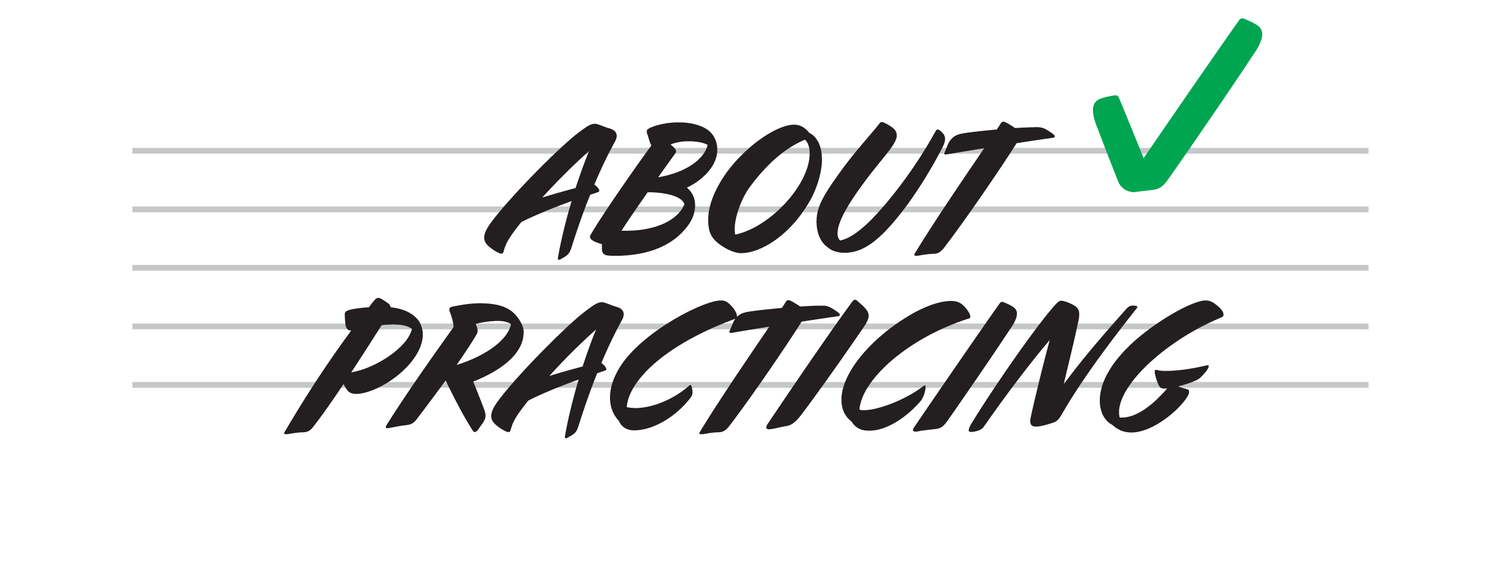Routine - it’s your superpower.
Your practicing routine is what, where, when and how you practice.
Everything about your practicing - commitment, planning, goals, desires, understanding - shows up in your routine.
What’s a routine?
The easiest and most common approach to practicing is to play whatever you feel like playing for as long as you feel like playing it, as often as you feel like doing it. I used to do that. It doesn't work.
A routine is the opposite of that approach. Your routine is what you have decided you're going to do every time you practice. It's where everything comes together and becomes real - your commitment to improving, your plan of action, all the choices you've made, the music you want to play, your optimism. Without a routine, it's hard to say you have any of that. Without a good routine you're mostly fooling around and hoping.
My routine
My routine has things that change every few months and things are more constant.
First, the things that don't change. I practice two hours every day, starting right after breakfast. First I stretch. Then I tune. I check the plan I wrote in my notebook at the end of yesterday's practicing. Next I write down whatever else I have to do that day so that I'm not thinking about it when I practice.
Then I practice in three forty-minute sections, each dedicated to a particular subject. The sections are separated by 5 minute stretch breaks. That's two hours of practicing, which takes two hours and fifteen minutes to complete.
I take notes while I practice. When I'm done, I write a plan for the next day's practicing, then say “Thank you” to the universe for being able to practice, and close the note book.
The things that change are the subjects. For September and October, they are:
MECHANICS: I work on playing with precision, being relaxed, and having good tone.
REPERTOIRE: I have about 50 original songs that I need to keep fresh.
PROJECTS: I prepare for upcoming performances, rehearsals or recordings OR I work on The Book, a collection of 60 standards I'd like to be able to sing and/or play from memory. (The Book is also my “theory workshop.”)
This routine gives big blocks of time to the three areas that are my highest priorities. With only three, and with those three being clearly identified, I always know what I should be working on, and I can find my way back easily when I get sidetracked.
But while the subjects are fixed, the lower-level details are not. I decide about these while I'm practicing. That keeps the whole thing reasonably flexible, with room for exploring and trying new ideas.
Creating a routine
Two things will shape your routine more than anything else:
what your want to accomplish (your goals) and
how much time you are willing/able to spend (your commitment).
You should think about those two things, but the most important step is to get started. Schedule tomorrow's practice session. Decide what time, and how long, and then show up. Do that every day while you think about goals and commitment. You can trust trial and error. Your routine will come together sooner than you think.
